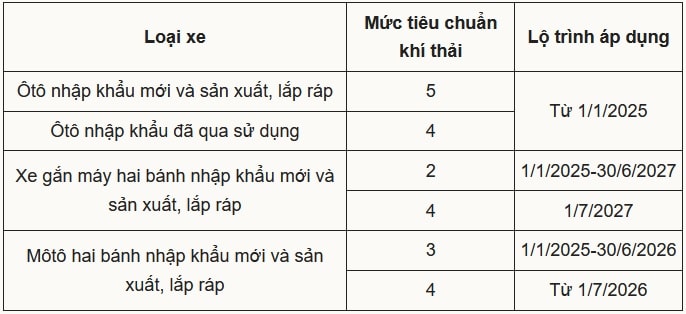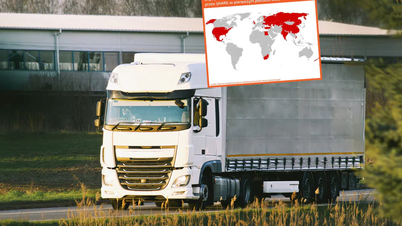
According to Decision 19/2024 recently issued by the Prime Minister, the zero emission standard will be applied first in Vietnam from January 1, 2026 to a number of types of vehicles including: 4-wheeled passenger or cargo vehicles with imported or domestically manufactured and assembled engines, new or used, and 3-wheeled motorbikes, 3-wheeled motorbikes newly imported and domestically manufactured and assembled.
This information then made many car users worried because they thought that cars belonged to the group of "4-wheeled passenger vehicles". However, according to the Ministry of Transport , in the circulars regulating the control of "4-wheeled passenger vehicles with engines", this type of vehicle is not a car as many people understand.
Specifically, a four-wheeled motor vehicle is a motorized road vehicle that runs on an engine, has a passenger structure, two axles and at least four wheels. The vehicle has a design speed of no more than 30 km/h, and no more than 15 seats (including the driver's seat).
So with this definition, the common type of vehicle is the passenger car in tourist areas, golf courses, resorts... Previously, many businesses used gasoline cars, but most have now switched to using electric or gas cars because they are quiet, saving operating and maintenance costs.
Therefore, this regulation does not affect car users and in fact does not affect business units much.
Meanwhile, a motor vehicle is a motor-driven vehicle with two axles, four wheels, the engine and cargo box mounted on the same chassis (similar to a truck with a load capacity of less than 3,500 kg).
This type of vehicle uses a gasoline engine, has an engine capacity of no more than 15 kW (20 horsepower), a design speed of no more than 60 km/h and a curb weight of no more than 550 kg.
Four-wheeled cargo vehicles have been piloted by the Government since 2009 after the ban on the circulation of homemade 3- and 4-wheeled vehicles. These vehicles are registered, issued with TD license plates and circulate in the 2- and 3-wheeled lanes.
In addition to the two types of vehicles mentioned above, the Government also provides a roadmap for applying emission standards to many other types of vehicles. Specifically, as shown in the table below.

Compared to previous regulations, the emission standards applied to imported or domestically produced cars, both new and old, remain the same. Meanwhile, motorbikes and scooters are gradually applying higher emission standards.
The emission standards (Level 2, Level 3, Level 4 and Level 5) for newly imported and manufactured and assembled vehicles specified in this Decision are emission standards corresponding to Euro 2, Euro 3, Euro 4 and Euro 5 of the United Nations Economic Commission for Europe (UNECE) and the European Union (EC) Directive on type approval of motor vehicles.
This regulation does not apply to motor vehicles under the management of the Ministry of National Defense and the Ministry of Public Security used for defense and security purposes; motor vehicles imported or manufactured and assembled in Vietnam for scientific research, research serving production, display and introduction at fairs and trade exhibitions; motor vehicles manufactured and assembled for export...
TB (summary)Source: https://baohaiduong.vn/xe-cho-nguoi-va-hang-hoa-4-banh-bi-cam-phat-thai-tai-viet-nam-tu-nam-2026-398553.html
























![[Photo] National Assembly Chairman attends the seminar "Building and operating an international financial center and recommendations for Vietnam"](https://vphoto.vietnam.vn/thumb/1200x675/vietnam/resource/IMAGE/2025/7/28/76393436936e457db31ec84433289f72)









































































Comment (0)